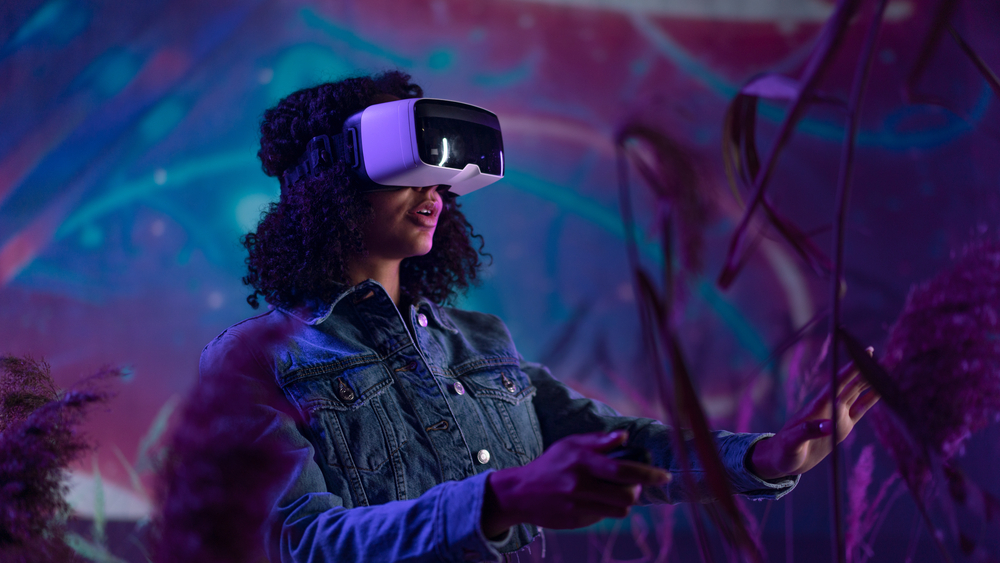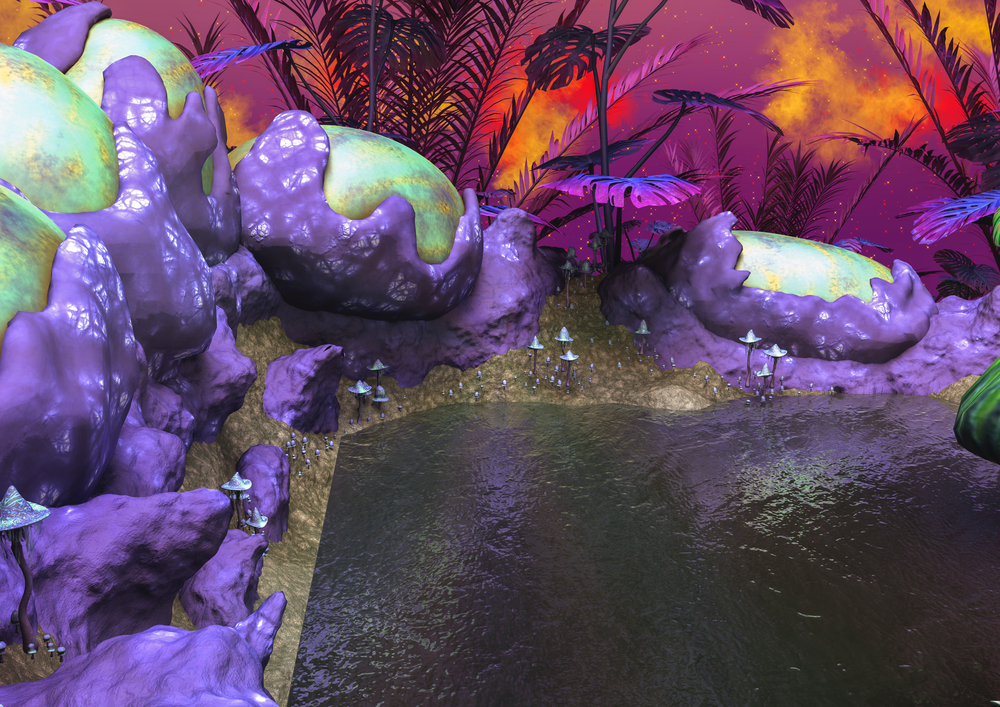Design for Immersive Environment: Key Principles of Virtual Realities
As technology continues to advance, boundaries between the real and digital world are becoming increasingly blurred. Possibilities in digital spaces multiply, and immersive environments emerge as the ultimate borderline between human-computer interaction. They not only captivate our senses, but also resonate with our emotions.
But what makes an environment immersive? And how do we design them in a way that feels natural, intuitive, and engaging? Let’s dive into the main principles behind designing immersive environments.

What is an immersive environment?
An immersive environment is a simulated, artificial space or universe; it seeks to replicate the real-world or create a realm of fantasy in a way that users or participants feel completely ”immersed” in it. These environments can be experienced through different senses, such as visual and auditory, and sometimes even touch or haptic feedback. The goal of an immersive environment is to create a believable experience where participants accept the simulated environment as their current reality.
The reason why immersive environments are so impactful is that they engage with multiple senses and often require active participation. This way, they lead to deeper understanding, stronger emotional responses, and more memorable experiences. An immersive environment can make a game or movie more emotionally resonant by letting participants “live” it. It can also make learning more effective by making abstract concepts tangible.
Types of immersive environments
Virtual Reality (VR)
Perhaps the most well-known type of immersive environment, VR involves creating a digital world that users can interact with. Participants typically wear a VR headset, which transports them to this digital realm, completely detaching them from the physical world.
Augmented Reality (AR)
AR overlays digital content in the real world. This can be achieved by using smartphones, tablets, or AR glasses. Unlike VR, AR does not remove users from their environment, but rather enhances it with additional information or graphics.
Mixed Reality (MR)
A combination of VR and AR, MR overlays and anchors virtual objects to the real world, allowing users to interact with both simultaneously.

Key principles for designing immersive environments
1. User-centric design
At the heart of any successful immersive environment lies an intuitive and engaging user experience. This is achieved through user-centric design — an approach that sets user needs at the center of the design process. Here’s a deeper dive into this principle:
Designing with the end user in mind
Begin by understanding who your users are and what they want. Create user personas, which are fictional representations of your target audience, to help visualize their needs, preferences, and potential challenges. These personas will guide design decisions, ensuring they cater to the intended audience.
Immersive environments can be complex, but user interface and experience should be as simple and intuitive as possible. This means reducing learning time for users, making straightforward navigation, and ensuring that interactions are natural. And don’t forget to recognize that users have different abilities and preferences. Offering interactions with multiple modes can improve accessibility and user satisfaction. Some users might prefer voice commands, while others lean towards hand gestures. So, design flexibility into the environment to cover a wide range of users.
Importance of user testing in early stages
Rather than waiting until an environment is fully developed, introduce user testing early on in the design process. This will allow you to make changes based on real feedback, ensuring that the final product aligns with real user needs. Early user testing can identify design flaws or usability issues before they become integrated into the project.
Develop prototypes before building environments, so that they can be tested to get early feedback on design concepts, interactions, and user flow. Ensure that testing groups are diverse in terms of age, tech-savviness, physical abilities, and other factors. After user testing, analyze the feedback systematically: look for common patterns, recurring issues, or areas of improvement.

2. Spatial awareness
Unlike traditional 2D interfaces, immersive environments, especially VR and AR, place users within a three-dimensional space. This adds complexity, but also offers more engagement. Let’s delve deeper into it:
Making the most of 3D space
Depth is a powerful tool in VR and AR. Its proper use can create more engaging scenes, help prioritize information, and guide user attention. Divide your virtual space into zones based on user interactions: space around a user can be saved for personal interactions, mid-range for general activities, and distant zones for navigation cues. Bear in mind that objects closer to the user can seem more important, while distant objects can provide context or set a mood.
Maintain consistent and realistic scales, unless you’re intentionally trying to create a surreal experience. Incorrect scale can be disorienting and potentially cause discomfort.
Understanding user navigation and interaction in a virtual space
Ensure that movements within the environment mimic real-world movements to the greatest extent possible. If a user reaches out to grab something, their virtual hand should reflect that movement in real-time, maintaining the illusion of immersion. When users interact with the environment, they should receive immediate and clear feedback. This could be haptic (a controller vibrating), auditory (a click or chime sound), or visual (an object lighting up). In such complex environments, users should have clear cues guiding them on where to go next: try using lighting, color contrasts, leading lines, or even audio cues.

3. Intuitive interactivity
With immersive environments, the way in which users interact with their surroundings can make or break the experience. If you want your design to be successful, interactions you create must feel as intuitive as possible, mirroring natural behaviors.
Ensuring actions and reactions are natural and predictable
When designing interactions, using actions that mirror real-world behaviors can make the virtual environment feel more intuitive. Ensure that similar actions produce similar results throughout the environment. If tapping an object in one scenario selects it, the same action shouldn’t be different in another. It’s important to recognize that users will make mistakes. Designing systems that offer easy “undo” options and guide the user back on track can enhance the user experience. Besides, users should get a prompt response to any interaction. If they press a button, there should be feedback indicating the action has been recognized.
Limiting cognitive load
Especially in an immersive environment, less is often more. Overwhelming users with too many options or information can make their experience worse. Information and interactions should be organized in a clear hierarchy and be simple. Prioritize the most critical interactions or information and make them more accessible. Try introducing users to an environment gradually — short tutorials can guide users, ensuring they’re comfortable with the basics before delving deeper. Last but not least, avoid cluttering the user’s visual field: use clear icons, readable fonts, and straightforward graphics.
To wrap up
Immersive environments are not just about cutting-edge technology or vivid graphics, but also about crafting experiences that resonate with users and sometimes even transform them. Thanks to technological innovations, boundaries between the real and digital world will continue expanding, as well as our expectations for virtual spaces. Yet, by keeping users at the heart of every decision and prioritizing intuitive, spatially aware, and interactive designs, we set the stage for digital experiences that are as rich as our very own reality—if not richer.
Other articles you might find interesting
Gamification in Marketing: Engage Your Audience Using Games
The Power of Humor in Marketing: How to Make Jokes for Business Benefit
Guerrilla Marketing: Creative Strategies for Standout Campaigns









